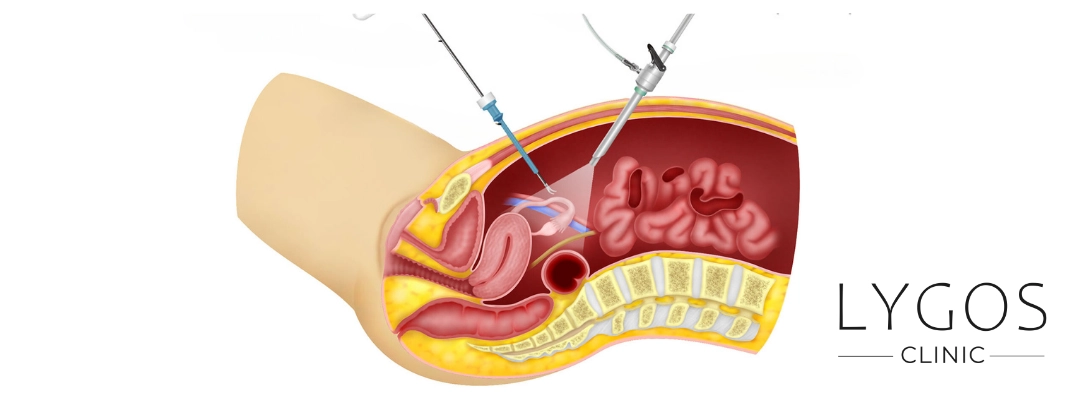Laparotomy Surgery | Causes of Laparotomy | LYGOS 2025

Exploratory Laparotomy
A laparotomy is an open surgical operation in the abdomen and is often used to diagnose and treat various health problems. This method allows surgeons to directly see and examine the organs inside the abdomen. This surgical intervention is especially preferred in cases such as removing or repairing an abdominal organ, delivering a baby or determining the stages of cancer.
During laparotomy, vital organs such as the spleen, pancreas, gall bladder, gall bladder, intestines and kidneys are carefully examined and necessary medical procedures can be performed. This procedure plays a critical role in clearly identifying and treating problems inside the abdomen. So, what is laparotomy? In this article, we will discuss these questions.
What is a Laparotomy?
Laparotomy is a surgical procedure in which the abdominal wall is cut to enter the abdominal cavity to examine or diagnose organs. This operation is also commonly used to control bleeding in the abdomen, remove tumors, treat conditions such as ovarian torsion, ruptured cysts and appendicitis. During the operation, the surgeon can examine the abdominal organs in detail, identify the source of the problem and perform the necessary intervention. The postoperative recovery process requires careful care, although it varies from person to person.
Causes of Laparotomy

Laparotomy is an open abdominal surgery that doctors perform to identify problems that cannot be detected by imaging tests, especially in people at risk of abdominal pain or internal bleeding. This surgical intervention allows them to observe where and how far the symptoms have spread. In an emergency, laparotomy may be preferred to laparoscopy and can also be used for emergency deliveries such as caesarean sections.
The reasons for a laparotomy are as follows:
- Diagnostic laparotomy: A laparotomy is performed to directly observe the abdominal organs if a definitive diagnosis cannot be made by methods such as ultrasound, tomography or MRI. This can be done when the source of abdominal pain cannot be identified or to examine the spread of cancer.
- Examination of trauma-related damage: External impacts such as traffic accidents and falls can cause serious damage to the abdominal organs. A laparotomy can be performed to detect and treat such injuries. This surgical procedure is also used in traumatic situations such as stabbing.
- Treatment of infection and inflammation: Laparotomy comes into play when infected fluid accumulations, such as peritonitis, need to be cleared. This procedure is preferred to prevent the spread of infection and to clear the inflammation.
- Conditions requiring emergency intervention in the abdomen: In emergencies such as burst appendicitis, intestinal blockages or a hole in the stomach or duodenum, laparotomy can be used to eliminate these life-threatening risks.
- Tumor and cancer treatment: Laparotomy can be used to remove tumors in organs such as the liver, stomach, intestines or pancreas, to rule out suspected cancer or to check for the spread of cancer. It can also be used to take samples of cancerous tissue.
- Organ transplantation: Laparotomy is used for major operations such as liver or kidney transplantation. This method is also used to open adhesions after surgery or to correct misplaced organs.
- Endometriosis treatment: In the case of endometriosis, the spread of uterine tissue outside the uterus, a laparotomy procedure is also preferred to remove lesions outside the uterus.
Laparotomy plays an important role in solving many serious health problems and requires careful care during the patient’s recovery.
Which Organs Does Laparotomy Examine?

Laparotomy is an important method that allows detailed examination of many organs through a surgical intervention in the abdomen. During this procedure, it is possible to directly observe the source of abdominal pain, the spread of cancer cells or the effects of various traumas. Laparotomy offers an effective solution for undiagnosed abdominal problems and allows surgeons to examine and treat multiple organs simultaneously. So, which organs does a laparotomy examine?
- Digestive system organs: The small and large intestines are examined in detail.
- Liver: Both functional disorders and structural problems such as tumors can be observed.
- Gallbladder and ducts: Gallstones or blockages in the bile ducts are examined.
- Pancreas: This organ is evaluated in detail, especially in patients with suspected pancreatic cancer.
- Uterus and ovaries: Cysts or tumors that may occur in the organs of the female reproductive system are examined.
- Urinary tract and kidneys: Kidney stones or blockages in the urinary tract are checked.
- Spleen: Injuries or enlargement of the spleen are evaluated.
- Peritoneum (peritoneum): Inflammation of the peritoneum or other pathological conditions are examined.
Laparotomy is the surgical procedure of choice for undiagnosed abdominal pain or to evaluate the spread of cancer, as it allows direct examination of the abdominal organs and simultaneous treatment.
Laparotomy Surgery

Laparotomy is a surgical procedure that plays an important role in the diagnosis and treatment of abdominal conditions. During this intervention, the doctor can examine the abdominal organs in detail, identify problems and perform the necessary treatment procedures. Depending on the patient’s health condition and the surgeon’s findings, many different procedures can be performed during laparotomy.
Among these procedures, a detailed examination of all organs can be performed to resolve abdominal pain of unknown origin. Pathological examination by taking samples from tissues or organs suspected of cancer plays an important role in determining the stage of the disease. Tumors in vital organs such as the liver, stomach, intestines or pancreas can also be removed during this process.
Other important procedures that can be performed during laparotomy include removal of lymph nodes to control the spread of cancer, removal of damaged intestinal tissue in cases such as intestinal obstructions or diverticulitis. It can also be used to remove the spleen due to sudden enlargement or disease, treat peritoneal inflammation, drain infected fluids accumulated in the abdomen.
In cases of internal bleeding, closure or repair of bleeding vessels, removal of fibroids or ovarian cysts in the uterus and hysterectomy are among the important treatments performed by laparotomy. It can also be used to terminate a pregnancy in the fallopian tube in cases of ectopic pregnancy or if the gallbladder needs to be removed. Laparotomy is a comprehensive surgical method that allows multiple procedures to be performed simultaneously depending on the patient’s health status. In this way, it is possible to both diagnose and treat, aiming to improve the quality of life.
What is the Difference Between Laparoscopy vs Laparotomy?
Laparoscopy is a procedure performed through small incisions. In this way, the patient recovers faster and the risk of postoperative complications is very low. Laparotomy is an open surgery technique that requires a larger incision.
The large incisions made in the abdomen during laparotomy allow the surgeon direct access to the organs, but this method requires a longer recovery period than laparoscopy. Also, the risk of complications may be slightly higher with open surgery. Both methods are preferred according to medical needs, but laparoscopy offers a more comfortable option for patients due to its less traumatic nature.


